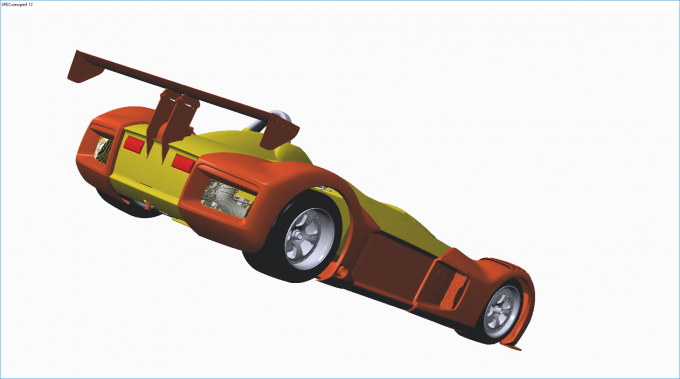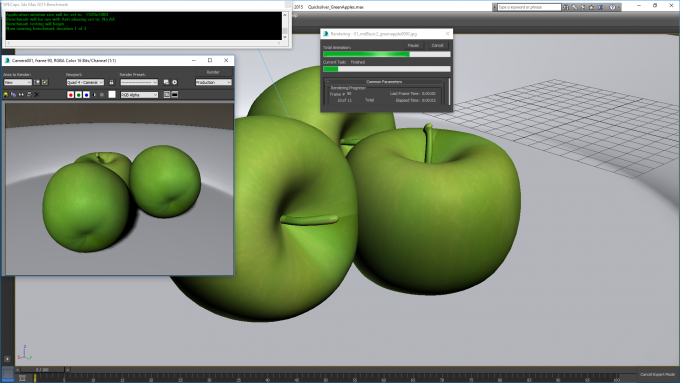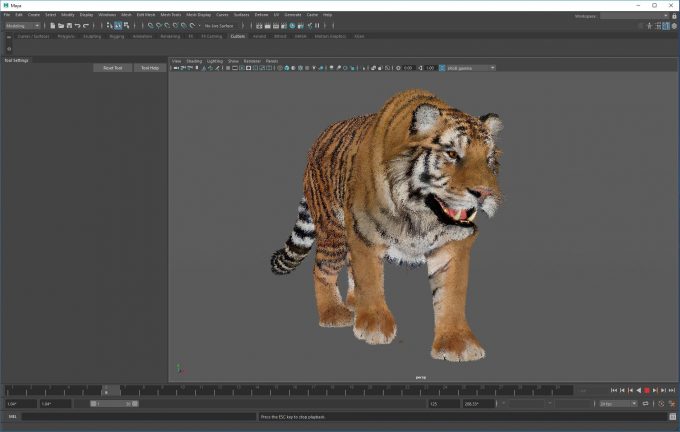- Qualcomm Launches Snapdragon 4 Gen 2 Mobile Platform
- AMD Launches Ryzen PRO 7000 Series Mobile & Desktop Platform
- Intel Launches Sleek Single-Slot Arc Pro A60 Workstation Graphics Card
- NVIDIA Announces Latest Ada Lovelace Additions: GeForce RTX 4060 Ti & RTX 4060
- Maxon Redshift With AMD Radeon GPU Rendering Support Now Available
Radeon Pro vs. Quadro: A Fresh Look At Workstation GPU Performance

There hasn’t been a great deal of movement on the ProViz side of the graphics card market in recent months, so now seems like a great time to get up to speed on the current performance outlook. Equipped with 12 GPUs, one multi-GPU config, current drivers, and a gauntlet of tests, let’s find out which cards deserve your attention.
Page 4 – SPEC: 3ds Max 2015, Maya 2017, SPECviewperf
When it comes to benchmarking hardware for serious use cases, there is no place better to look than SPEC. I’ve dubbed the folks there as “the masters of benchmarking”, as each one of SPEC’s tools are meticulously crafted by professionals to deliver results as relevant and accurate as possible – a goal shared by us at Techgage.
Three SPEC suites are used for testing here, starting with SPECviewperf, for viewport performance across nine applications. Finally, SPECapc 3ds Max 2015 and Maya 2017 finish up the page to help us gauge performance in the respective Autodesk applications. We used to include SPECwpc, but it’s far better suited for testing complete systems, not individual components.
SPECviewperf 12.1
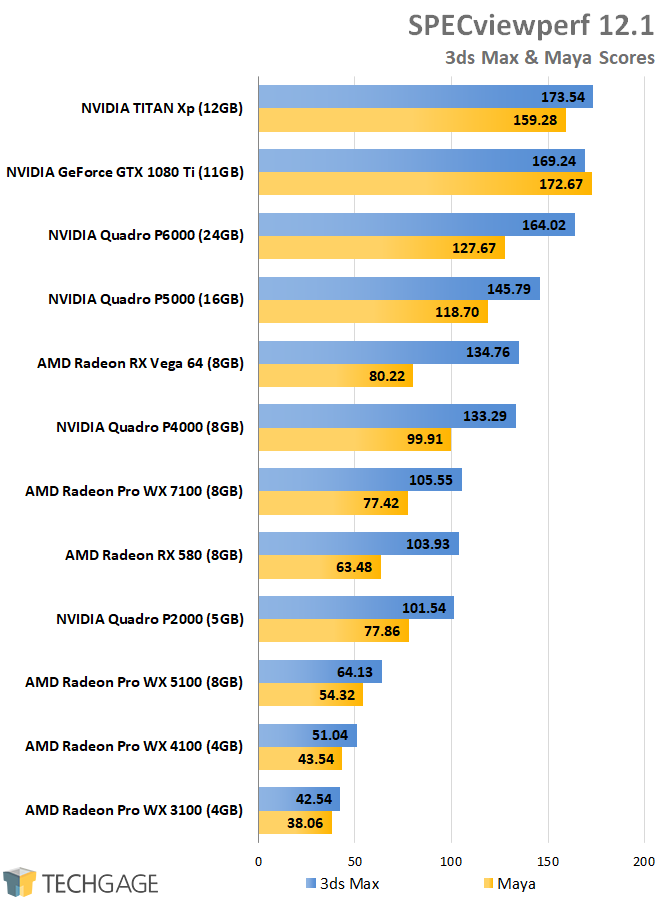
Results from 3ds Max through SPEC may seem redundant given the real-world testing in the same application a couple of pages ago, but it’s important to note the distinction between the tests: our tests exercise the rendering performance, whereas SPECviewperf tests the viewport performance inside of the application. AKA: the big window where the magic happens. If GPU A equals GPU B in rendering time, it may still differ in viewport performance, due to driver optimizations (one of the big reasons a pro card carry heftier price tags).
With the above tests, there’s no strong advantage for Quadro over GeForce, but there may be one for Radeon Pro over Radeon, based on the WX 7100 vs. Vega 64 Maya result. The 1080 Ti looks to be the best value card of this bunch, almost matching the performance of its bigger (twice as expensive) brother, and being noticeably better than the slower-clocked P6000.
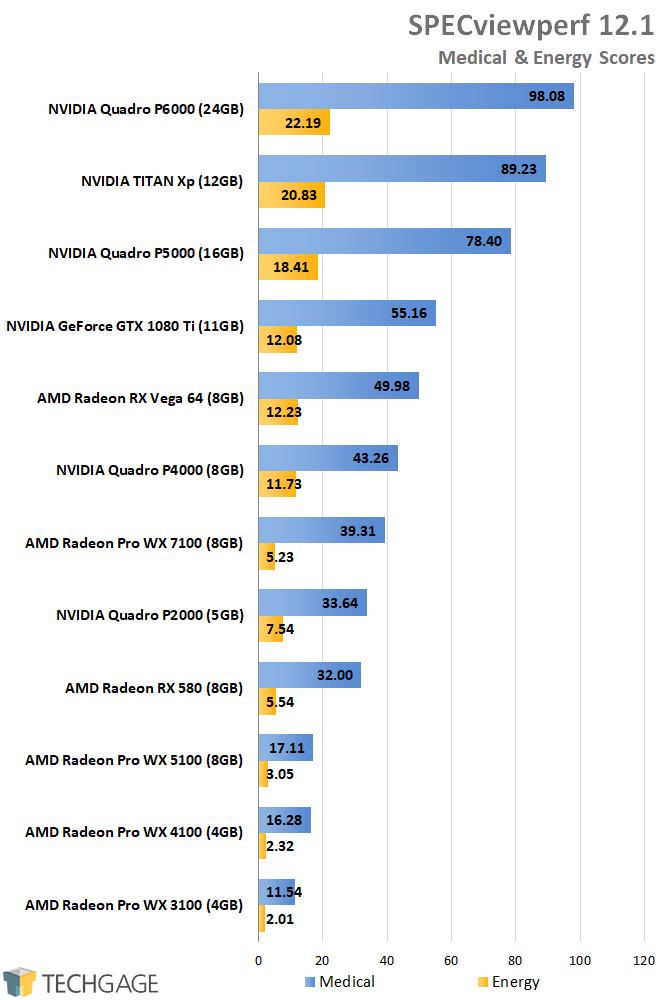
The P6000 got slapped by the 1080 Ti in the previous set of tests, but it strikes back hard in the medical and energy tests. Given the scenarios, I’d assume that was because of the 24GB of memory, but my logs show that no more than 3.5GB of VRAM was used at any point during the entire viewperf run… so, I’d attest it to general Quadro driver optimizations.
That especially seems likely when you consider the fact that the P5000 ranks so far ahead of Vega 64, even though the latter would defeat the former by a 5-10% margin in a gaming match-up. It’s clear where some NVIDIA driver R&D dollars have had focus.
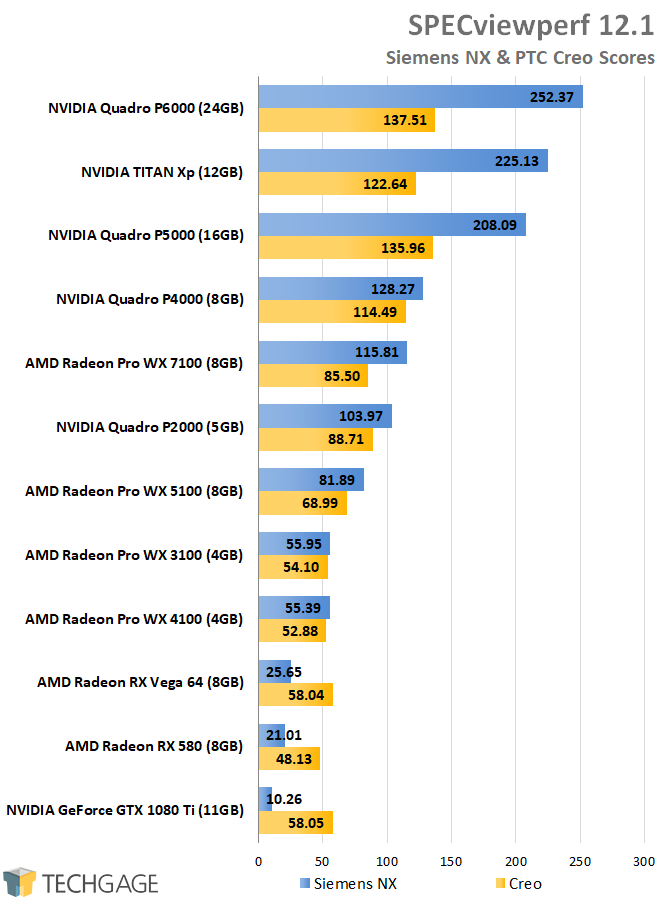
Siemens NX is one of the highest-end CAD applications on the market, so it’s no surprise that NVIDIA has put a ton of focus into optimizing performance for it. Seeing as though SNX’s default renderer is based on NVIDIA’s CUDA-based Iray, some increased performance is expected, but the delta between top and bottom here is extreme.
Before moving on, don’t miss the sad-looking 1080 Ti sitting at the very bottom. GeForce gets absolutely no Siemens NX love, but TITAN gets love for both that and CREO – just not as much as Quadro, as we see the slower-clocked P6000 outpacing the TITAN Xp.
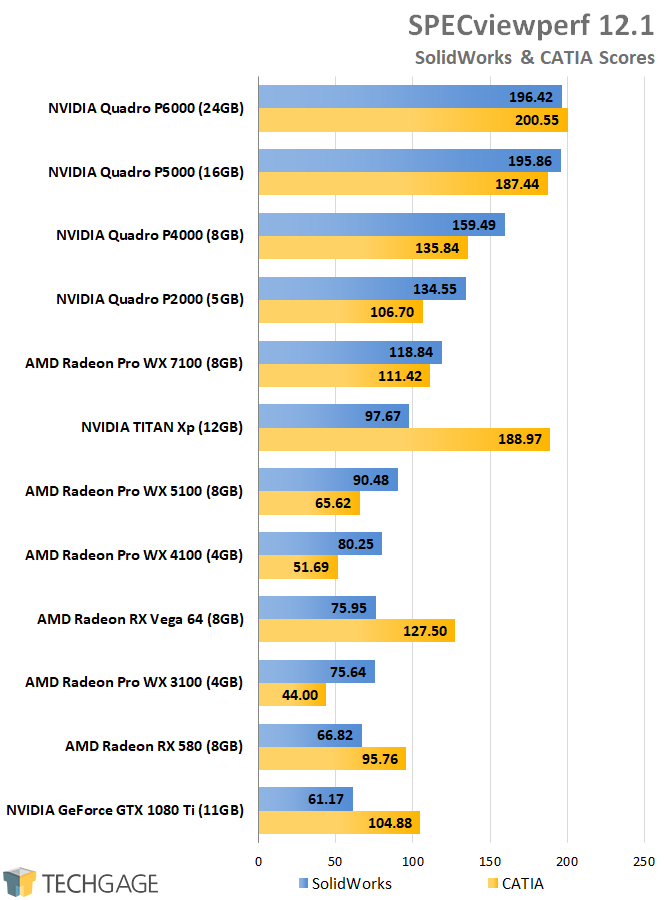
Like Siemen’s NX, Dassault’s CATIA and SolidWorks are competing high-end CAD applications, and once again, we can see the clear advantage Quadro users have. Whereas the TITAN Xp performed admirably against the P6000 in SNX, it falls to half performance in SolidWorks. The CATIA result is less disjointed, but interestingly, the P5000 matches the performance of the TITAN Xp, but like the P6000, it offers incredible gains in SolidWorks.
SPECapc 3ds Max 2015

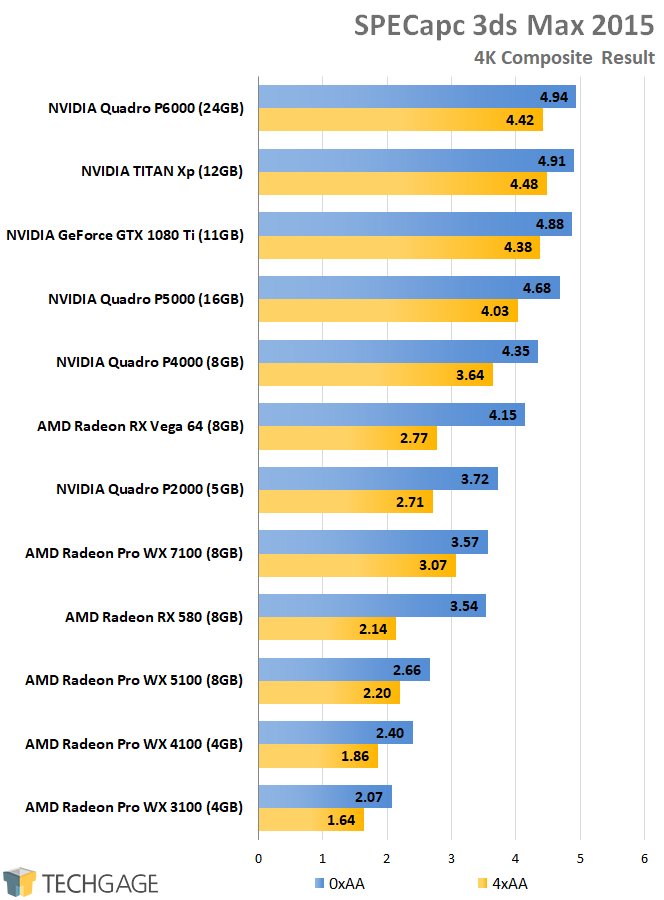
If not for the RX 580 being included here, the fact that regular Radeons were not optimized for 3ds Max would escape me. AMD does have some clear optimization, as the slower WX 7100 outperforms the top Polaris card in the lineup. The Vega 64 can’t even match it, but comes a lot closer thanks to its added capability.
At 1080p, there’s another clear divide between AMD and NVIDIA, but things shake up to the most minor of degrees by swapping the positions of the Vega 64 and… lowly P2000. NVIDIA has clear advantages here as the P6000 outperforms the faster TITAN Xp once again.
SPECapc Maya 2017
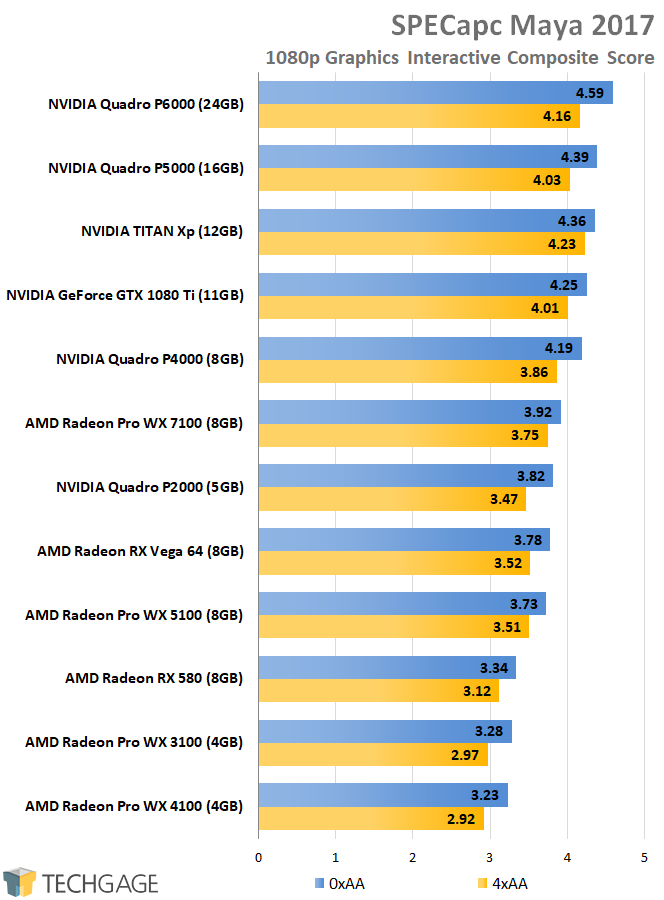
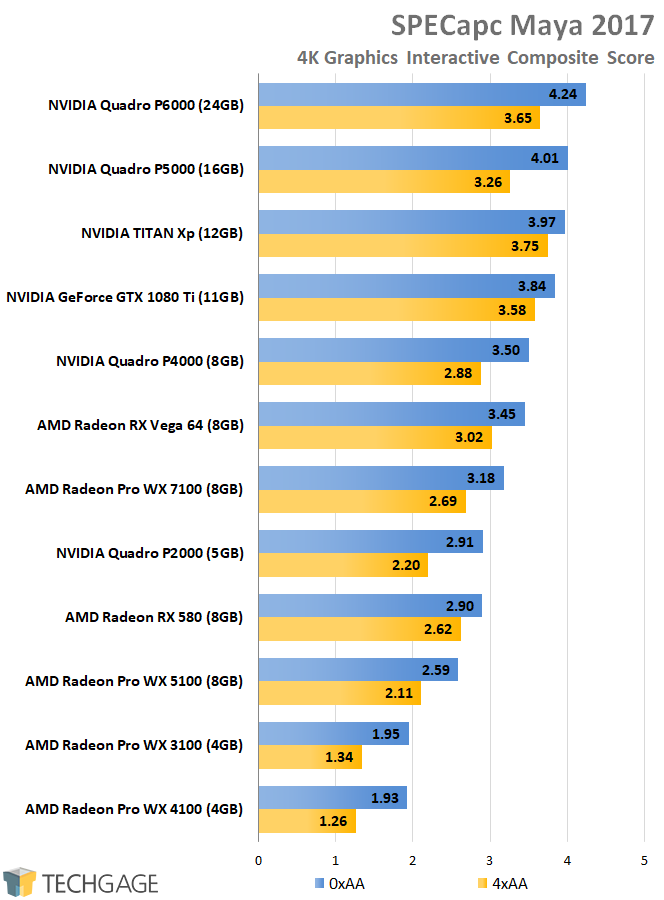
SPEC’s Maya test paints a similar picture to the 3ds Max one, but AMD gained in some unexpected places. The WX 7100 outperforms every other Radeon, which makes me think that a card like the WX 9100 could at least match the top NVIDIA options here. At 4K, the Vega 64 takes the AMD reign.
Overall, NVIDIA leads the pack, not just with the Quadro offerings, but TITAN and GeForce as well. Optimizations on that camp mean you get huge value with a GPU like the GTX 1080 Ti, and a lot of value with mainstream Quadros like the P4000. But AMD offers a lot of value at the same performance spot, and even better at 4xAA. Only 1080 Ti, TITAN Xp, and P5000+ best it.
Support our efforts! With ad revenue at an all-time low for written websites, we're relying more than ever on reader support to help us continue putting so much effort into this type of content. You can support us by becoming a Patron, or by using our Amazon shopping affiliate links listed through our articles. Thanks for your support!




